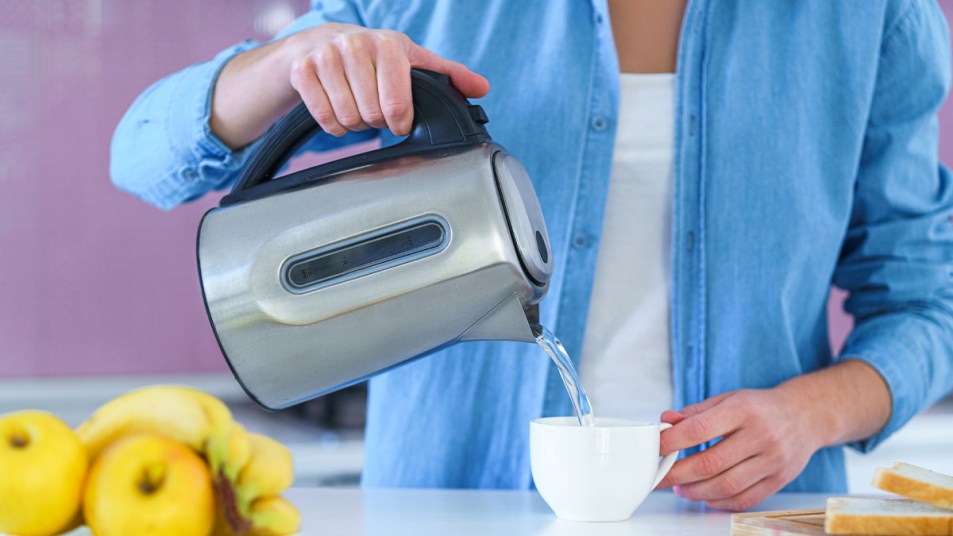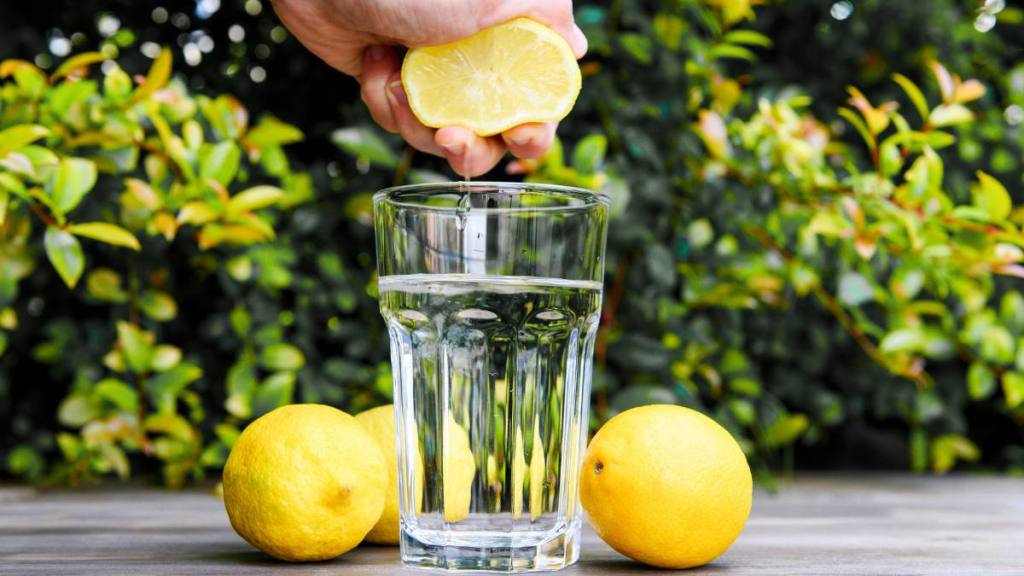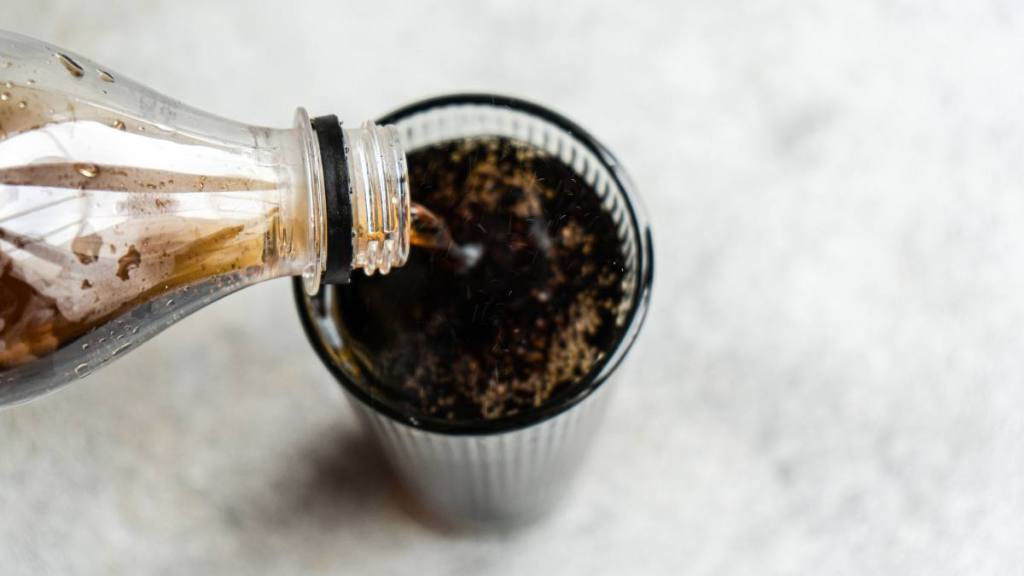Chalky Spots on Your Electric Kettle? What They Are + Easy Ways to Erase Them Fast
Plus the one combo you don't want to use

Using an electric kettle to boil water for coffee or tea can streamline your mornings. But over time, minerals like magnesium and calcium found in water can cause a chalky white film to build up on the inside – and even the outside – of your electric kettle. In addition to looking gross, that buildup can affect the taste of your hot beverages and make your kettle less efficient, so it’s important to keep the appliance clean. How to clean electric kettle deposits?Below are several expert-tested DIY cleaners to keep both the inside and outside of your kettle as clean as, well, a whistle.
How to clean electric kettle using baking soda and water
A mixture of baking soda and water will work well to dissolve the hard water buildup in the bottom of your kettle, says Ghida Ladki, a cleaning and household social media content producer for Accidental Adult. “Use two cups of water for every teaspoon of baking soda,” says Ladki. Combine the ingredients inside the kettle and set it to boil. The baking soda’s abrasive properties work to loosen the buildup on the inside of the kettle. “Be careful not to use too much baking soda or it will bubble out of the kettle,” Ladki says. Once the water has boiled, let the mixture sit for several hours or even overnight for tough scale buildup. Then, once it has done its job, rinse the kettle thoroughly with water several times. Any leftover scale spots can be addressed with a soft cloth or non-abrasive brush dampened and then dipped into baking soda and gently rubbed at until dissolved, being careful not to disturb the heating element within the pot.
Important to note: While you may come across videos that tell you to mix the baking soda with vinegar, some experts caution that it doesn’t work well since vinegar and baking soda cancel each other out.
See the baking soda method in action here:
How to clean electric kettle with lemon juice and water

Lemon juice is a great natural bleach and antiseptic. That’s why it works as a cleaning agent. And since lemons are naturally acidic, a mixture of lemon juice and water can also be used to melt away any hard water scale from the inside of your kettle, says twenty-year cleaning veteran Raina Raflo, owner of Sponge & Sparkle, Atlanta’s oldest residential cleaning company.
Combine about ¼ cup of fresh lemon juice for every two cups of water. (If your kettle is large, you’ll need to double the formula.) “Then, just like with the other methods, you’ll need to set your kettle to boil the combination,” says Raflo. Once the water has boiled, let it sit in the kettle for at least an hour or two. If your kettle has a ton of scale buildup, though, you may have to let it sit for longer. Then, rinse the kettle thoroughly several times to remove any leftover lemon juice. Raflo says that while she prefers the vinegar and water method, this one also works well. Don’t have fresh lemons? A tablespoon of citric acid can be used in place of fresh lemon juice.
How to clean electric kettle with vinegar and water
You can also use a solution of white vinegar and water to dissolve the white buildup inside your kettle, says Ladki. “Vinegar is acidic, and the acid breaks down the calcium and magnesium crust inside the kettle,” she says. Ladki advises filling the kettle to just above where the filmy buildup ends with a mixture of one part vinegar to three parts water and letting it come to a boil. “Once the liquid has come to a boil, let it sit for at least a few hours to make sure the vinegar has dissolved the scale away.” Once the buildup is gone, fill the kettle with clean water and let it come to a boil again. Repeat this step a second time, and then rinse thoroughly several times to make sure there’s no leftover vinegar in the appliance. “You don’t want any vinegar taste lingering,” says Ladki.
See Ladki’s video demonstrating this method here:
Does the Coca-Cola cleaning method work?
According to more than a few social media cleaning posters, Coca-Cola can also be used to descale an electric kettle. And believe it or not, experts say it works! Simply pour Coke into the kettle up to the maximum fill line and set it to boil. Once the soda has cooled, use a soft scrubbing pad or brush to gently clean the inside of the kettle, and then rinse clean several times to remove any lingering Coca-Cola flavor. Because Coke is an acidic liquid containing both citric and phosphoric acid, it works like any other acid to dissolve away the limescale in the kettle.

So, do you want to use this method? Since Coke also has a lot of sugar in it, you’d have to be extra careful to rinse the kettle in order to prevent any sticky leftover residue. That’s why experts don’t really recommend this method. And since vinegar and lemon juice have a lower pH level, they’re better suited to the job.
How to clean the outside of your electric kettle
Once you’ve removed the interior mineral scale from your kettle, you’ll want to make sure it’s just as clean on the outside. But because an electric kettle has holes for connecting its plug, which then attaches to an electrical outlet, it can’t be submerged in water. “An all-purpose cleaner will work quite well on the majority of kettles,” says Ladki. “I use the same one I use on my other kitchen surfaces.”
For a stainless steel kettle, the folks at KitchenAid say you can also use your favorite dish detergent to wash down the outside, being careful not to get any soap inside and then wiping it down with a damp cloth before drying it. They also say olive oil is a great natural cleaning solution and recommend a non-abrasive sponge or cloth and a teaspoon of olive oil rubbed gently over the exterior of the kettle to make it as shiny as new.
How to avoid future limescale buildup
Want your kettle to stay clean longer? There are a few things you can do to prevent unsightly scale from building up inside the appliance.
Empty your kettle after every use: Never let water linger inside of your kettle, says Raflo, who recommends emptying the kettle and then quickly drying it once it’s cooled off. Especially if you have hard water, this will prevent mineral scale from having a chance to build up.
Descale your kettle monthly: Cleaning your kettle monthly (or even weekly or bi-weekly if it gets a ton of use) is a great way to prevent any mineral buildup and keep your kettle from losing any efficiency. Simply pick your method of choice from the options above and use it regularly.
Use distilled water: Distilled water has minerals like calcium and magnesium removed from it, so it won’t cause any hard water to build up inside your kettle. Keep in mind, though, that the same lack of minerals that will keep your kettle clean may also affect the taste of your beverage — as distilled water can taste a bit flat. If you don’t like the way it tastes in your coffee or tea, your best bet is to clean your kettle regularly.
For more kitchen cleaning hacks, click through the links below!
How To Clean Kitchen Cabinets Without Damaging Them
How To Clean a Wooden Cutting Board + the Salt Trick That Wipes Out Stubborn Stains
This Easy Citrus Hack Gets Your Microwave Sparkling Clean in Minutes













